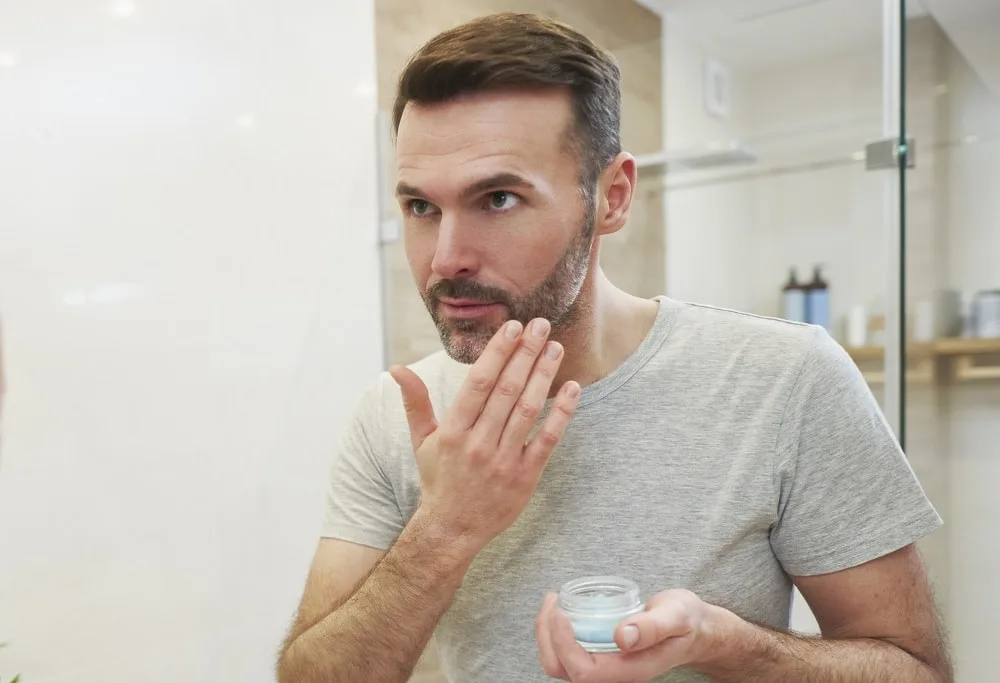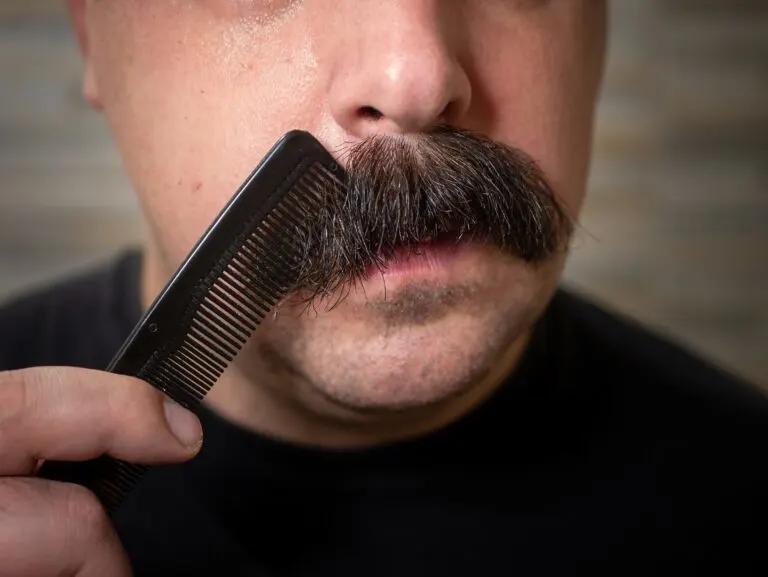How To Fix Patchy Beard: Tips For Even Beard Growth
Facial hair does not always grow as well as most men want. In some cases, the beard develops bald spots in between, causing it to look uneven. Such a beard is called a patchy beard. Fortunately, there are several ways to fix a patchy beard and achieve the stylish, manly look you desire.
A thick, lush beard changes the shape of a man’s face. It is comparable to the effect that makeup has on women. Genetics plays a significant role in determining the thickness and distribution of facial hair.
You can not alter your genetics, but you can improve your lifestyle habits to boost these hormones, which will thicken your beard. We will cover everything you need to know about fixing your patchy beards, including the causes.
What Causes Uneven Beard Growth?
It’s important to understand the underlying causes of patchy beards. The causes of uneven or patchy beard growth can be attributed to genetics, stress, hormonal imbalances, or poor grooming habits. Here are the most common reasons for patchy beards:
-
- Genetics: Your genes play a significant role in determining the thickness and distribution of your facial hair. Some men have genes that make their facial hair grow patchy or uneven. This is more common in men who have a family history of patchy beards.
- Low Testosterone: Hormonal imbalances like low testosterone levels can affect the growth of facial hair and lead to patchiness.
- Nutritional Deficiencies: A healthy diet is necessary for hair growth. Protein, vitamin A, C, and E, and minerals are important for growing your beard gracefully. Lack of proper nutrition can result in hormonal imbalances, which can lead to patchy beard growth.
- Skin Conditions: Skin conditions such as alopecia areata, psoriasis, or fungal infections can affect the health of your skin and hair follicles, leading to patchy beard growth.
- Age: Some men may experience patchy beard growth when they are younger, but as they get older, their beards may become fuller and more even.
- Over Styling and Grooming: Growing a good beard requires patience and care. Using excessive heat tools or harsh chemical products to style beard can damage facial hair follicles and cause hair fall.
- Stress: High levels of stress can cause hair loss, including facial hair, leading to patchy beards. It can reduce the blood flow to the hair follicles, resulting in weaker hair growth and patchy areas.
How to Fix Patchy Beards Naturally
1. Eat Healthy Food
Obesity can lower testosterone levels, which negatively impacts beard growth. Eating a healthy, balanced diet while watching your BMI can help undo obesity and regrow healthy facial hair.
While switching to a healthy diet, you should increase your intake of foods that are rich in:
- Zinc (such as chickpeas, nuts, etc.)
- Lean protein (fish and chicken)
- Healthy fats (like in avocados)
- Healthy carbs (such as whole grains)
- Vitamins (fruits and vegetables)
- Omega-3 fatty acids
- Iron
Avoid as much junk food as possible and if you smoke, try to quit it because chemicals in tobacco cause DNA damage and inflammation to the blood vessels that supply nutrients to follicles.
2. Exercise
You are probably wondering how working out relates to beard growth. The truth is that when you exercise regularly, the process improves blood circulation in your body and to the face. As a result, your beard gets a constant supply of nutrients and hormones in the follicles, making them grow thick and fast.
For the best results, vary the workouts to exercise the whole body and do it in the afternoon. Naturally, testosterone levels spike in the morning then gradually decrease in the afternoon. Working out at this time of the day will ensure the levels remain high.
3. Get Enough Hours of Sleep
Testosterone is naturally released in your body when you sleep, which is why the levels spike in the morning. However, if you don’t get enough hours of sleep, these levels will remain low, which will slow down beard growth.
What happens is that an enzyme called 5-alpha reductase converts testosterone into DHT (dihydrotestosterone), which attaches to hair follicle receptors to make them grow. If you maintain a healthy sleeping schedule, you will have enough testosterone and DHT levels to fix your patchy beard.
4. Wash and Moisturize
Washing your beard helps keep the pores open by removing debris and dead skin cells around the hair follicles. At the same time, it minimizes the chances of hair growing under the skin, which can cause cysts.
After washing and drying, you should apply a conditioner (such as the leave-in type) to keep the hair soft, moisturized, nourished, and dandruff-free. Doing these simple tasks will make the beard appear fuller and more attractive. While at it, massage the cheeks to boost blood circulation in the area.
5. Exfoliate
Exfoliating has similar effects to washing; it helps to remove the dead skin cells that clog hair follicles. Try exfoliating at least once a week if you want to fix a patchy beard. There are several ways to do it naturally.
The first method is by using an exfoliating brush, which removes dead skin using bristles. You can either dry brush or wet brush. In the process, you will also relieve itchiness and boost blood circulation under the skin.
An exfoliation sponge is another option to consider, and you can use it with soap plus warm water to rub the beard. Exfoliating gloves work in the same way as sponges but are easier to grip.
Lastly, you can use an exfoliating scrub, which you apply on the skin below the beard and rub in a gentle, circular motion to remove dead skin. The process also massages the face, which improves blood circulation.
6. Use Natural Oils
Beards need proper care to eliminate patchiness. One of the best ways to do this is by applying natural oils, such as castor, coconut, and argan. These oils do not contain harmful chemicals and are proven to promote hair growth. You can use them as substitutes to conditioners and apply them after washing your beard.
7. Microneedle
Microneedling usually involves using a pen or roller with tiny needles to puncture your facial hair area. The theory behind this process is that puncturing activates healing, in which the body sends fresh blood to the beard area to control the damage.
As this happens, your cheeks will get enough supply of nutrients and hormones, which activate dormant hair follicles in the patchy areas.
However, overdoing the process can lead to tissue damage, so you should be careful and follow the recommended procedure. For instance, when using a derma roller with 0.75mm long needles, microneedle one or two times a week maximum.
8. Let it Grow
Sometimes the solution is to let the beard grow. It might look untidy at first but resist the urge to trim it. It is common for patches to occur, but give it at least a month to see how it will appear.
If it is still patchy, you can disguise the bald areas using a dye or eyebrow pencil, like what women do to their eyebrows. The goal is to make it look neat and voluminous until it does become like that.
During this stage, make sure you brush the hair because this lifts the individual strands to increase the volume of the beard. At the same time, it helps to improve blood flow under the skin.
9. Consider Minoxidil
If you fail to fix your patchy beard from the above solutions you can give minoxidil a try. Minoxidil is a topical solution that has been shown to promote hair growth in some men. But it might not work for everyone.
Getting a thick, healthy beard might not be easy, but it is possible. You only have to give it more care and attention for as long as it takes to fill up the bald spots. If you follow the methods above on how to fix patchy beards, you might get a full beard to groom and look good.








